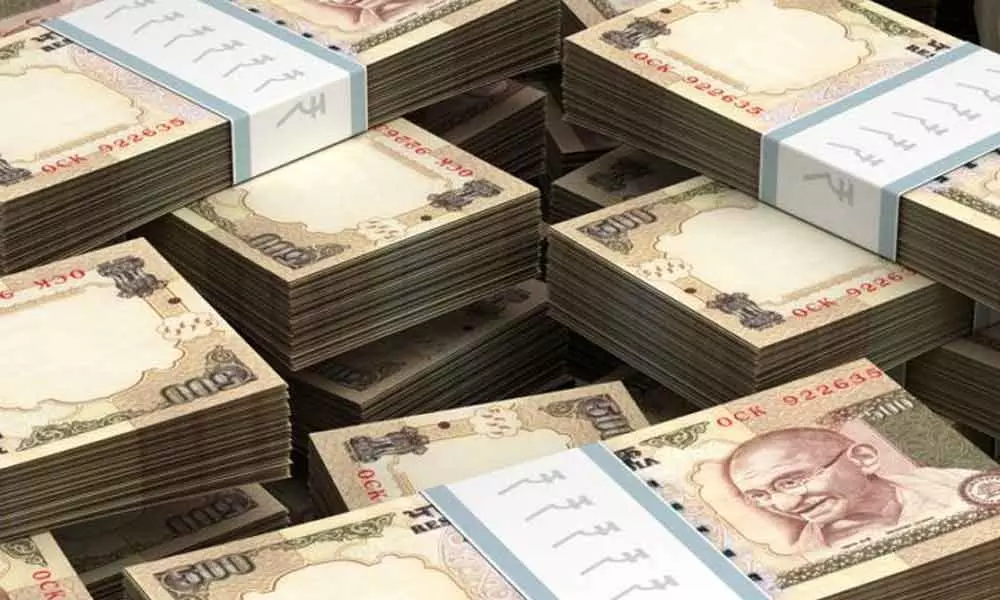How companies defraud banks

Two types of frauds are taking place in our banks. One fraud takes place with the connivance of the bank officials.
Two types of frauds are taking place in our banks. One fraud takes place with the connivance of the bank officials. The Punjab Maharashtra Cooperative Bank knowingly gave loans to a company named HDIL even though they knew that the borrower was in deep financial trouble.
They hid these "bad" loans from the RBI by shifting them to about 21,000 small bank accounts. Similarly, the Maharashtra State Cooperative Bank extended loans to insolvent sugar mills apparently under the prodding of its Director Ajit Pawar, former Deputy Chief Minister of Maharashtra. The borrowing sugar factories could not repay the loans and the bank came into trouble.
The second fraud takes place when large companies mislead the banks as Nirav Modi misled the Punjab National Bank and Infrastructure Leasing & Financial Services (IL&FS) and a number of other banks to the extent of a whopping Rs 90,000 crore.
I studied another company which has borrowed about Rs 76,000 crore from our banks — nearly as much as IL&FS. The strategy adopted by this company is to borrow only small amounts itself — in this case, a paltry Rs 2,400 crore. However, the company has established a good number of subsidiaries.
The subsidiaries are technically separate companies, but their 100 percent shares are owned by the principal company. It is similar to the head of a household establishing a shop in the name of his son. The subsidiaries have borrowed a huge amount of Rs 71,600 crore from various banks. The principal company is, therefore, taking loans from the banks through its subsidiaries.
The principal company is "clean" while the subsidiaries are enmeshed in dirt. These subsidiaries, in turn, transfer the money borrowed from the banks to their principal company by way of work contracts. I found that six subsidiaries borrowed Rs 3,493 crore from the banks and paid Rs 3,067 crore to their principal company. It is like the son borrowing money from the bank and transferring the same to his father through work contracts.
To understand how the principal company manipulates the game, I looked closely at a hydropower project being made by a subsidiary in Uttarakhand. The subsidiary has given all the contracts for the making of the project to its own principal. Of the total 1465,000 units of electricity consumed in making the project in June 2019, only 18,000 units or 1.2 percent was consumed by the subsidiary.
Rest of the 98.8 percent electricity was consumed by the principal company as a "contractor" of its own subsidiary. In other words, the principal established the subsidiary; and the subsidiary gave reverse contract to the principal. The actual work was wholly done by the principal.
The subsidiary was created only to make a layer between the project and the principal in order to avoid scrutiny. The principal can now hide behind the subsidiary if the project incurs a loss. This is similar to a father washing his hands off his son's business if the son incurs a loss. On the other hand, the father can enjoy the benefits of the work contracts given by his son.
The objective of making a project through a subsidiary is to make it possible to bleed the subsidiary and hide the losses. The actual value of the assets created in this hydropower project is Rs 565 crore as per documents filed with the government.
However, the present investment in the project is about Rs 2,000 crore. Part of this escalation is due to the damage incurred by the project in the floods of 2013. This is justified. That said, the investment made in making repairs to the project does not add to the value of the assets. For example, the son may spend Rs 10,000 to repair his car after he meets with an accident.
The expenditure is fully justified. But such an expenditure would not lead to an increase in the value of the family car. The value of the car would go down. Similarly, in this case, the subsidiary spent some money to repair the project after the flood. But that expenditure did not lead to an increase in the assets of the project.
By showing that the value of the assets is the Rs 2,000 crore spent by it and hiding the fact that the actual value of the assets is only Rs 565 crore, the subsidiary has hidden the fact that nearly Rs 1,500 crores has gone down the drain.
Now we can understand why the principal company makes subsidiaries. It can hide the losses from the lending banks, the government and from its shareholders by not disclosing that the true value of the investment of Rs 2,000 crore is only Rs 565 crore.
All these people continue to think that the principal company is running in profit while actually it is in deep loss. This camouflage is possible because the losses are hidden in the subsidiary while the profits are shown in the principal company.
A similar rot appears to exist in other subsidiaries of this company. This becomes clear when we look at the performance of the company and the subsidiaries separately. The profits of the principal company were Rs 9,200 crore in 2018-19 while the combined profits of all its subsidiaries were only Rs 5,400 crore.
However, the principal company borrowed a meager amount of Rs 2,400 crore from the banks while combined borrowing of all its subsidiaries was a whopping Rs 71,600 crore. This makes it clear that the subsidiaries are borrowing from the banks and transferring the money to the principal through contracts.
In the end, the subsidiaries are left indebted while the principal shines brightly. This like the son borrowing monies from the banks and giving lucrative contracts to his own father. The son suffers losses while the father shines.
The banks, the government and the shareholders only see that the principal company has made a profit of Rs 9,200 crores on a borrowing of Rs 2,400 crores. They do not see that the subsidiaries are heavily indebted.
It should be obvious that this manipulation cannot continue ad infinitum.
A time will soon come when the banks will realise that the subsidiaries are going under, they will stop extending loans to the subsidiaries, and the castle of the principal company will come crashing down like a fort of sand just as it happened in the case of IL&FS. The question is when?
The banks and the government must be proactive. All large companies having multiple subsidiaries must be considered inherently suspect. A forensic audit must be undertaken of the assets of the subsidiaries.
The failure to undertake such audit in time was responsible for the losses incurred by PNB and other banks due to their lending to Nirav Modi and IL&FS. The banks must look at the profitability of the business of the son, instead of looking at the credibility of the father.

















